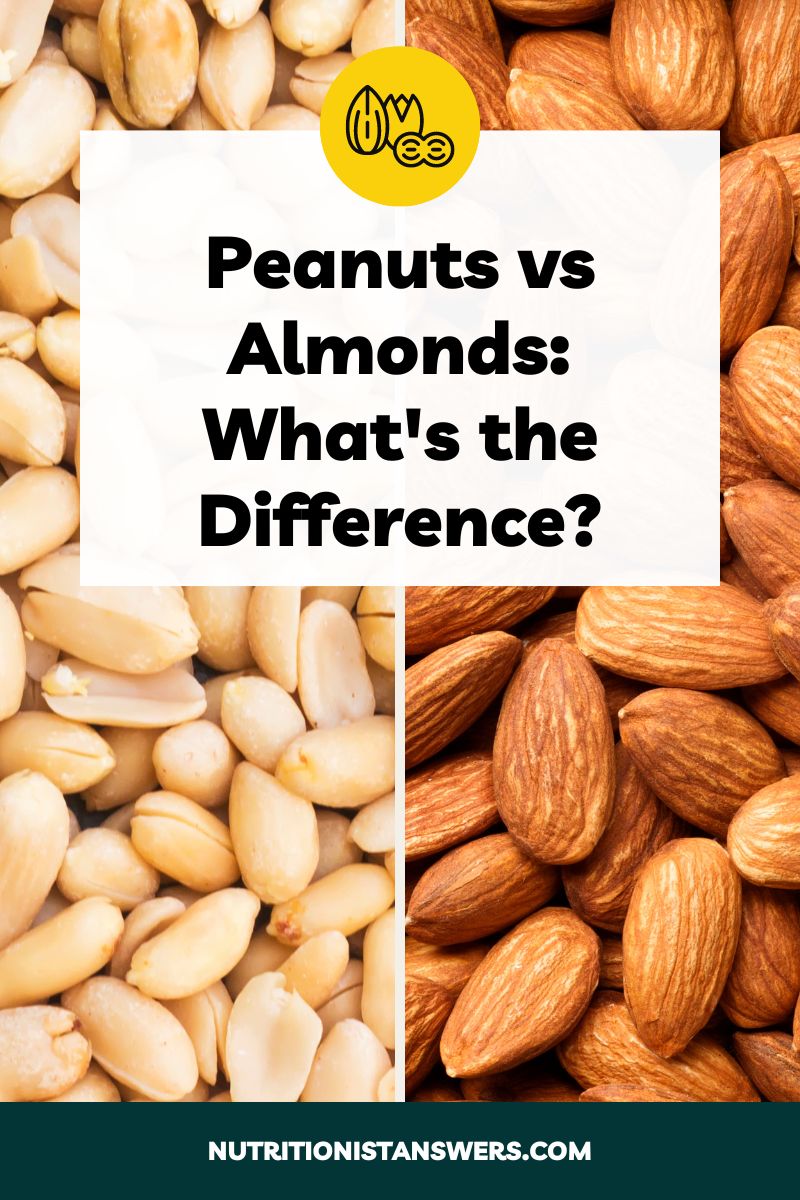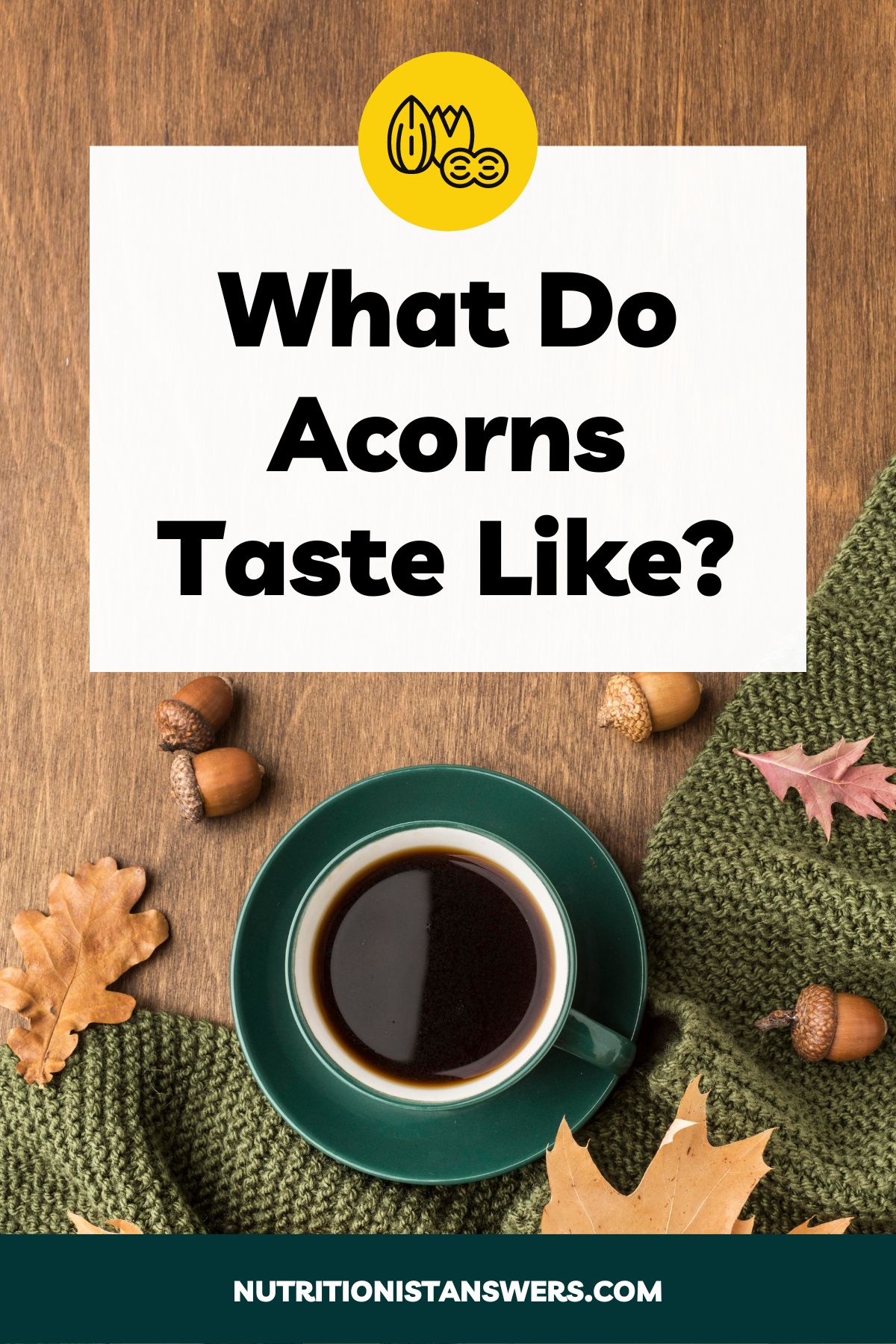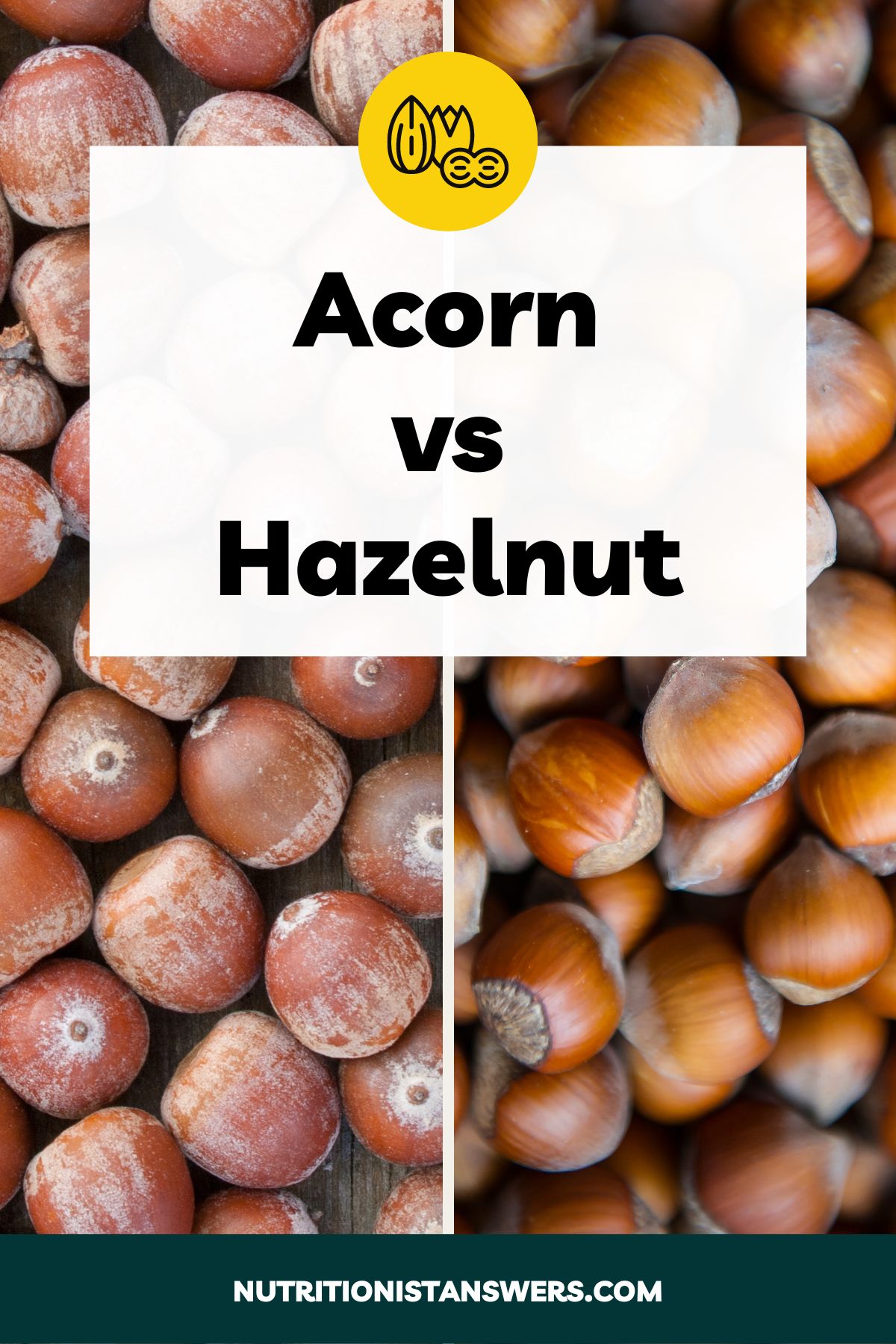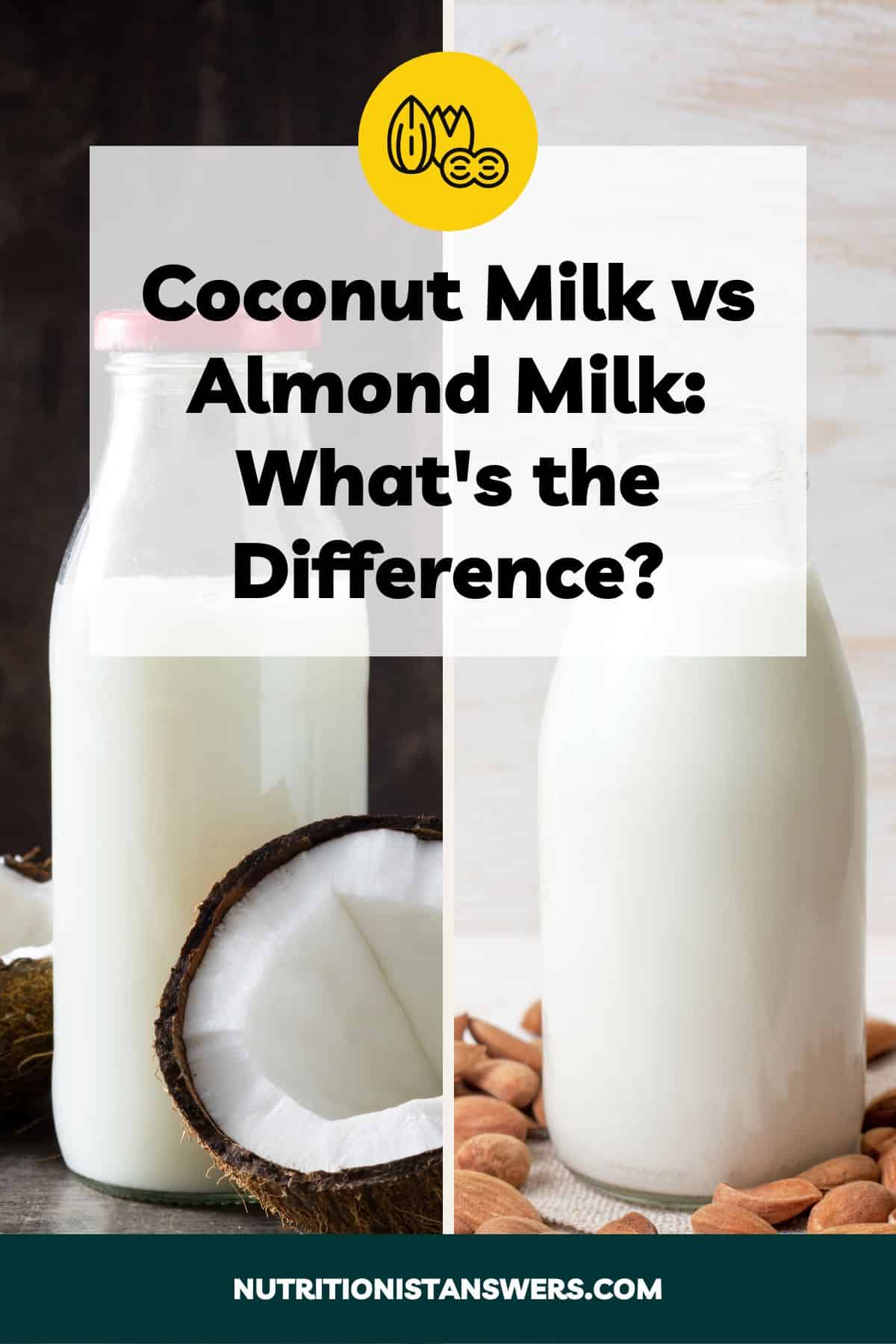Peanuts and almonds are two of the most popular and nutritious nuts available.
While both are celebrated for their distinct flavors, versatile uses, and nutritional benefits, they each bring something unique to the table.
In this article, we’ll explore the similarities and differences between peanuts and almonds, in terms of nutrition, taste, available forms, prices, and uses.

Please note that this article contains affiliate links. If you click one of these links and make a purchase, we may earn a commission. As an Amazon Associate, we earn from qualifying purchases.
What are peanuts?
Peanuts, while typically referred to as nuts, actually belong to the legume family alongside beans, lentils, and peas. They originated in South America and are now cultivated worldwide in tropical and subtropical climates (1).
Peanuts have light brown shells with a raised, net-like pattern. They can be easily cracked open to reveal two cream-colored edible seeds covered in a papery, reddish-brown skin.
The seeds themselves are crunchy and have a unique flavor — a blend of earthy and nutty notes, with a hint of sweetness that gets stronger when roasted.
Peanuts can be found in various forms including raw, roasted, shelled, and unshelled, and are available for purchase at most grocery stores, typically located in the snack or baking aisle.
Peanuts serve as a versatile ingredient in the culinary world, often enjoyed raw or roasted as a snack, ground into creamy or crunchy peanut butter, or incorporated into a range of dishes from savory sauces to sweet desserts.
What are almonds?
Almonds are a type of tree nut produced by the almond tree (Prunus dulcis), which is native to Central Asia (2).
They are encased in a tough, teardrop-shaped shell that can be cracked open to uncover the edible kernel — a creamy white nut covered in a thin layer of brown skin.
Almonds have a crunchy texture and mild flavor. They taste nutty and slightly sweet with a hint of bitterness.
You can find them in various sections of your local grocery store or health food market — the baking aisle, snack aisle, or bulk foods section — and they’re also available for online purchase.
These versatile nuts can be savored as a standalone snack, tossed into salads, sprinkled over baked goods and desserts, or even processed into almond milk or butter.
Peanuts vs almonds
Peanuts have a more robust, earthy flavor, while almonds taste more mild. Both nuts are crunchy, but peanuts are a little softer.
Nutritionally, almonds and peanuts are very similar. Both are high in fat, low in carbs, and contain a moderate amount of protein. Almonds have a little less protein and a bit more carbs than peanuts.
Peanuts are higher in most B vitamins, as well as copper, while almonds provide greater amounts of riboflavin, magnesium, calcium, and vitamin E.
Here’s a more detailed review of how they compare in flavor, nutrition, available forms, prices, and recommended uses:
Flavor comparison
Peanuts are nutty, earthy, and slightly sweet — a robust flavor that intensifies when roasted. They have a satisfying crunch that transitions to a creamy, paste-like consistency as you chew.
Almonds have a more delicate, subtly sweet and nutty flavor with a hint of bitterness. They offer a hard, crisp bite that leads to a buttery and slightly grainy texture.
Peanuts are ideal for recipes that could benefit from a strong, savory flavor, whereas almonds are better suited for dishes that require more subtle nutty notes.
Nutrition comparison
Here’s a side-by-side comparison of the calorie and macronutrient content of peanuts and almonds, based on a 1-ounce (28-gram) serving size (3, 4):
| Nutrient | Peanuts, unroasted (28g) | Almonds, unroasted (28g) |
| Calories | 161 | 164 |
| Protein | 7 grams | 6 grams |
| Fat | 14 grams | 14 grams |
| Saturated fat | 2 grams | 1 gram |
| Monounsaturated fat | 7 grams | 9 grams |
| Polyunsaturated fat | 4.4 grams | 3.5 grams |
| Carbohydrates | 5 grams | 6 grams |
| Fiber | 2.4 grams | 3.5 grams |
Calories
One serving of almonds and peanuts has roughly the same amount of calories.
A 1-ounce (28-gram) serving of peanuts provides 161 calories, while the same serving of almonds offers 164 calories.
Since peanuts are slightly smaller than almonds, there are 35 peanuts in a one-ounce serving, compared to just 24 almonds in the same serving size.
Protein
Peanuts are 17% higher in protein than almonds (7 grams vs 6 grams per serving, respectively).
If you’re trying to include more protein in your diet, peanuts would be the slightly better nut choice.
Fat
Almonds and peanuts have the same amount of fat — 14 grams in each 1-ounce serving.
Peanuts are higher in saturated and polyunsaturated fat, while almonds have more heart-healthy monounsaturated fats.
Carbohydrates
Like most nuts, peanuts and almonds are fairly low in carbohydrates.
Almonds have slightly more carbohydrates than peanuts, providing 6 grams per serving compared to the 5 grams found in peanuts.
Vitamins and minerals
Here’s an overview of the vitamin and mineral content of peanuts and almonds, based on a 1-ounce (28-gram) serving (3, 4):
| Nutrient | Peanuts, unroasted (28g) | Almonds, unroasted (28g) |
| Vitamin A | 0 mcg RAE (0% DV) | 0 mcg RAE (0% DV) |
| Vitamin B1 (Thiamin) | 0.2 mg (17% DV) | 0.06 mg (5% DV) |
| Vitamin B2 (Riboflavin) | 0.04 mg (3% DV) | 0.3 mg (23% DV) |
| Vitamin B3 (Niacin) | 3.4 mg (21% DV) | 1 mg (6% DV) |
| Vitamin B5 (Pantothenic acid) | 0.5 mg (10% DV) | 0.1 mg (2% DV) |
| Vitamin B6 (Pyridoxine) | 0.1 mg (6% DV) | 0.04 mg (2% DV) |
| Vitamin B9 (Folate) | 68 mcg (17% DV) | 13 mcg (3% DV) |
| Vitamin B12 (Cobalamin) | 0 mcg (0% DV) | 0 mcg (0% DV) |
| Vitamin C | 0 mg (0% DV) | 0 mg (0% DV) |
| Vitamin D | 0 mcg (0% DV) | 0 mcg (0% DV) |
| Vitamin E | 2.4 mg (16% DV) | 7 mg (47% DV) |
| Vitamin K | 0 mcg (0% DV) | 0 mcg (0% DV) |
| Choline | 15 mg (3% DV) | 15 mg (3% DV) |
| Sodium | 5 mg (<1% DV) | 0.3 mg (<1% DV) |
| Potassium | 200 mg (4% DV) | 208 mg (4% DV) |
| Calcium | 26 mg (2% DV) | 76 mg (6% DV) |
| Phosphorus | 107 mg (9% DV) | 136 mg (11% DV) |
| Magnesium | 48 mg (11% DV) | 77 mg (18% DV) |
| Iron | 1.3 mg (7% DV) | 1.1 mg (6% DV) |
| Zinc | 0.9 mg (8% DV) | 0.9 mg (8% DV) |
| Copper | 0.32 mg (36% DV) | 0.29 mg (32% DV) |
| Manganese | 0.6 mg (26% DV) | 0.6 mg (26% DV) |
| Selenium | 2 mcg (4% DV) | 1 mcg (2% DV) |
Compared to almonds, peanuts are higher in most B vitamins, including thiamin, niacin, pantothenic acid, pyridoxine (B6), and folate.
Almonds, on the other hand, are significantly higher in riboflavin and magnesium, providing around 20% of the Daily Value (DV) of each. They also offer close to 50% of the DV for vitamin E.
Special Diets
If you’re following a special diet, you may be wondering whether peanuts or almonds are a better choice for you.
Dairy-free diet
Both peanuts and almonds are naturally dairy-free.
Gluten-free diet
Both almonds and peanuts are naturally gluten-free and can be consumed on a gluten-free diet.
Ketogenic diet
Like most nuts, both peanuts and almonds can be enjoyed as part of a keto diet due to their high fat and low carb content.
However, peanuts are the better choice, because they contain 17% fewer carbs than almonds.
Peanuts have 5 grams of carbs and 2.4 grams of fiber per 1 ounce (28-gram serving), while an equal portion of almonds has 6 grams of carbs and 3.5 grams of fiber.
Low-fat diet
Almonds and peanuts are very high in fat and may need to be limited on a low-fat diet.
Typically, low-fat diets limit fat to 30% or less of total daily calorie intake (5). On a 2,000-calorie diet, a single serving of peanuts or almonds would take up 6% of calories from fat (about one-fifth of your daily fat allowance).
Low-FODMAP diet
Peanuts are low-FODMAP, but almonds are not low-FODMAP, according to the Monash University FODMAP Diet app.
A 1-ounce serving (about 20 nuts) of almonds is high in galactans. Almond butter and almond flour are also high in galactans in servings larger than 1 tablespoon and ⅓ cup, respectively.
Almonds can only be consumed on the low-FODMAP diet in portions of 10 almonds or less (roughly half the typical serving size for almonds).
Peanuts are low in fermentable carbohydrates and can be consumed freely on the low-FODMAP diet.
Peanut butter is also low-FODMAP in servings of 2 tablespoons (32 grams). However, larger servings (3 tablespoons or more) are high in fructans and galactans.
Low sodium diet
Almonds and peanuts are both naturally low in sodium. However, packaged nuts are often salted and can contain 80 mg (or more) of sodium per serving.
If you’re following a low-sodium diet, which limits sodium to less than 2300 mg, you may want to choose unsalted or lightly salted nuts instead (6).
Vegetarian diet
Both peanuts and almonds are plant-based and can be eaten on a vegetarian diet.
Vegan diet
Almonds and peanuts are both vegan since they come from plants.
Available forms
1. Whole (peanuts and almonds)
Almonds are typically sold whole with their shells removed, while peanuts are sold either shelled or unshelled.
You can find them easily at most supermarkets and health food stores, in the baking aisle, bulk foods section, or snack aisle. They can also be purchased in bulk online from Nuts.com.
Buying whole nuts and chopping them at home is usually less expensive than buying pre-chopped or sliced nuts.
2. Pre-cut (peanuts and almonds)
Pre-cut almonds and peanuts are a hassle-free option that can be eaten or used in recipes without any preparation.
Almonds are available sliced or slivered (peeled and cut into tiny sticks) and can be found in the baking aisle or bulk foods section of the grocery store.
Pre-cut peanuts are less common because they are softer and easier to chop on your own at home. However, you might be able to find chopped peanuts online or in the baking aisle of supermarkets.
3. Flour (peanuts and almonds)
Nut flours made from almonds or peanuts can be used to replace wheat flour in baked goods, breaded meats, and more.
Almond flour is usually located in the baking aisle or bulk foods section of most supermarkets. You can also purchase almond flour online.
Peanut flour is less common than almond flour and is sometimes available online. Anthony’s is a brand of peanut flour available on Amazon.
Powdered peanut butter is a similar product but may also include sugar, salt, and flavorings like cocoa powder. PB2 is a popular brand found at supermarkets and online.
4. Butters (peanuts and almonds)
Almond butter and peanut butter are two of the most popular nut butter available, both made by grinding their respective nuts into a paste.
Peanut butter is known for its rich, creamy, and slightly sweet flavor, while almond butter offers a more subtle, nutty taste. They come in various forms such as smooth or crunchy, suiting different texture preferences.
Both peanut butter and almond butter can be found in most grocery stores, health food stores, and online marketplaces. Some stores also offer fresh grinding stations where customers can make their own nut butter on the spot.
Almond butter tends to be more expensive than peanut butter. To save money, you can buy almonds in bulk and make your own almond butter using a food processor or high-powered blender.
5. Oil (peanuts and almonds)
Almond oil (also called sweet almond oil) is a cooking oil made by pressing almonds. It is not the same as bitter almond oil, an essential oil extracted from bitter almonds (7).
Sweet almond oil has a mild, nutty flavor and a high smoke point of 221°C (430°F) (8). It’s great for roasting, baking, and frying, and can add flavor to salads and other side dishes.
Peanut oil is a more popular cooking oil that can be found at most supermarkets and is available in many forms, such as refined, cold-pressed, and roasted oils.
Refined peanut oil, which has been bleached and deodorized, is often used for frying due to its high smoke point (232°C or 450°F) and neutral flavor (8).
Roasted peanut oil is available from brands like La Tourangelle and has a stronger, nuttier flavor, making it better suited for drizzling over food after cooking or adding to dressings and sauces.
6. Milks (almonds only)
Almond milk is a popular non-dairy milk product that can be found in both the refrigerated and shelf-stable sections of most grocery stores.
As far as we know, there aren’t any commercial peanut milk products. Elmhurst used to make peanut milk (called milked peanuts), but it has been discontinued.
If you’re interested in trying peanut milk, you can make your own using filtered water, dry roasted peanuts, a blender, and a nut milk bag (or cheesecloth).
Cost
Peanuts are 2-3 times cheaper than almonds.
A 1-pound (16-ounce) container of peanuts typically costs $2-3, while almonds cost $5-7 for the same amount.
To get the most bang for your buck, you can buy nuts in bulk and store them in the freezer — keeping them cool will help keep them from going rancid.
Recommended uses
Peanuts and almonds can be used in many of the same ways.
1. Trail mixes and snacks
Peanuts and almonds are popular choices for trail mixes and snacks due to their distinct flavors and textures.
Peanuts, with their hearty crunch and robust nuttiness, can add a satisfying bite and rich flavor to trail mixes.
Almonds, on the other hand, offer a more subtle, slightly sweet profile and a firmer texture, which can provide a nice counterbalance to sweeter or softer elements in a snack mix.
If you’re creating a snack with bolder flavors like dark chocolate or cranberries, almonds might be a better choice due to their milder taste.
However, if your mix is more on the mild side, using peanuts could provide a stronger, nuttier flavor that stands out.
2. Baked goods and desserts
Almonds and peanuts can be a great way to elevate your favorite baked goods and desserts, such as cookies, cakes, pies, and ice cream.
Peanuts often take center stage in creations like peanut butter cookies or peanut brittle, adding a depth of flavor that is unmistakably bold and satisfying.
Almonds, with their subtle sweetness and buttery undertones, are a better choice for more refined desserts. They shine in delicate pastries such as almond croissants or frangipane tarts, and provide a delightful crunch in almond biscotti.
Choosing between the two often depends on the overall flavor profile you’re aiming for. If your dessert calls for a pronounced, earthy nuttiness, peanuts would be an excellent choice.
But if you’re crafting a dessert where a milder, complementary nutty flavor is desired, almonds can seamlessly blend in, enhancing other ingredients without overpowering them.
3. Salads and side dishes
Almonds and peanuts can add a satisfying crunch and nutty flavor to salads and side dishes.
Peanuts, with their rich, earthy flavor, work especially well in Asian-inspired dishes, such as Vietnamese chicken salad or a side of cold sesame noodles.
Almonds, with their subtle, sweet undertones and satisfying crunch, are a fantastic addition to many dishes, especially those with Fall flavors. Think of a Fall quinoa salad with almonds and dried cranberries or a side of green beans almondine.
Peanuts often pair well with ingredients like soy sauce, lime, and chili, while almonds pair beautifully with ingredients like olive oil, lemon, and fresh herbs.
For best results, use roasted nuts — it enhances the flavor and gives them a more appealing, crunchier texture.
4. Breaded meats and fish
Peanuts and almonds can provide an extra layer of flavor and crunch to breaded meats and fish.
Almonds make an excellent crust for milder, more delicate proteins like salmon, tilapia, and chicken. They also pair well with seasonings like lemon zest, parsley, and olive oil.
Peanuts are better for heartier meats like beef or pork, adding a unique depth of flavor that pairs well with ingredients like soy sauce, ginger, and garlic for an Asian-inspired dish.
Start by pulsing the nuts in a food processor until finely ground. Next, add them to a bowl with breadcrumbs or flour and seasonings. Dip the meat or fish in beaten egg and coat, then coat with the nutty mixture and fry until cooked through.
Keep in mind that nuts have a tendency to burn quickly, so you’ll need to adjust the cooking time accordingly. Aim for a golden-brown crust that is crispy on the outside.
Final thoughts
Peanuts are a type of legume known for their strong, sweet and nutty flavors. Almonds are tree nuts with a milder nutty flavor, a slightly bitter aftertaste, and a crunchier texture.
They’re nutritionally similar — high in fat and low in carbs with a moderate amount of protein. However, peanuts are higher in most B vitamins, while almonds provide more magnesium and vitamin E.
Almonds and peanuts are available in many different forms including whole, pre-cut, flour, nut butter, and oil. Peanuts are 2-3 times cheaper than almonds.
Both nuts can be used in many of the same ways, such as trail mixes, baked goods and desserts, salads, and breaded meats.
Curious how almonds compare to other nuts? Check out our in-depth comparisons of almonds vs pistachios, almonds vs cashews, almonds vs brazil nuts, almonds vs walnuts, and almonds vs pecans.
Amy Richter is a Registered Dietitian Nutritionist based in Missouri. She is an experienced nutrition writer and medical advisor for Healthline and Medical News Today. Amy is passionate about all things food-related and enjoys translating complex science into easy-to-understand articles.





